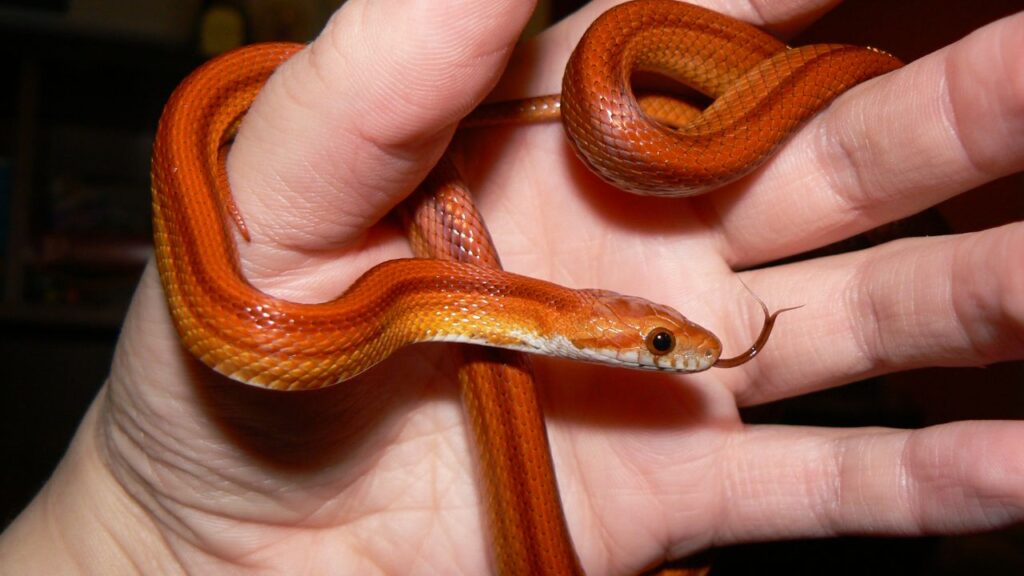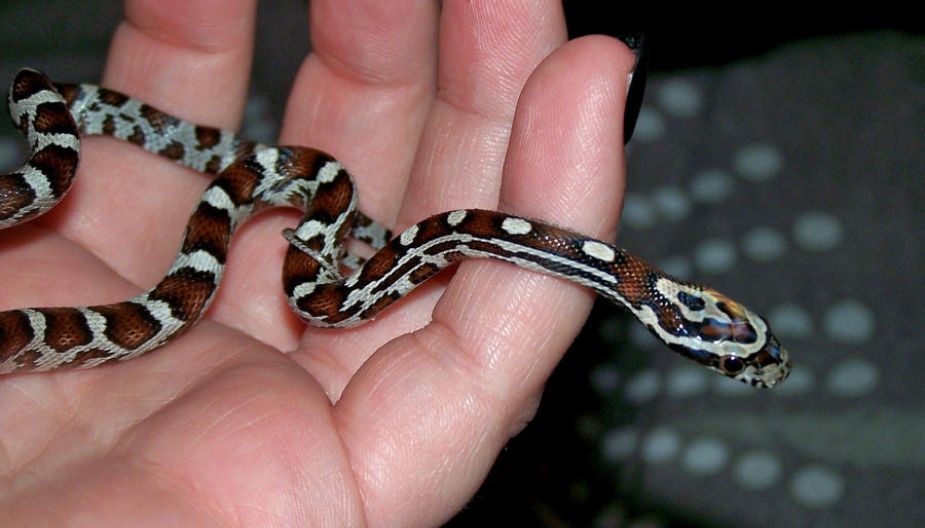When it comes to the intricate world of corn snake genetics, it’s like peeling back the layers of a complex puzzle. Each layer reveals a piece of the snake’s genetic code, contributing to the mesmerizing array of color and pattern variations that captivate snake enthusiasts.
From the classic amelanistic to the striking lavender snow, understanding the science behind corn snake morphs opens up a fascinating realm of knowledge. As you navigate through the complexities of inheritance patterns and breeding strategies, you’ll gain a deeper appreciation for the genetic mechanisms that shape these beautiful reptiles.
The Basics of Corn Snake Genetics
Understanding the basics of corn snake genetics is crucial for breeders and enthusiasts to comprehend the inheritance patterns of morphs and make informed breeding decisions. Genetic mutations play a significant role in the diverse range of morphs seen in corn snakes. These mutations, such as albino, anerythristic, and scaleless, result from changes in the snake’s DNA, leading to variations in appearance and coloration.
Evolutionary adaptations have also influenced the genetics of corn snakes, allowing them to thrive in different environments and exhibit distinct physical characteristics. These adaptations, honed over generations, contribute to the genetic diversity within the species.
By understanding these genetic principles, breeders can make informed decisions when selecting individuals for breeding to produce desired morphs. Additionally, this knowledge allows enthusiasts to appreciate the intricate genetic makeup of corn snakes and how genetic variations contribute to the captivating array of morphs available in the pet trade.
Common Corn Snake Morphs
The intricate genetic principles underlying corn snakes’ diverse range of morphs are exemplified in the common variations seen in the pet trade. Through selective breeding techniques, breeders have developed popular combinations that have captivated snake enthusiasts.
Some of the most common corn snake morphs include:
- Classic: The classic corn snake morph, with its vibrant orange color and bold pattern, remains a timeless favorite among snake keepers.
- Anerythristic: The anerythristic morph, characterized by its lack of red pigmentation, exudes a sleek and mysterious allure, attracting many admirers.
- Amelanistic: The amelanistic morph, known for its striking lack of black pigment, showcases the beauty of simplicity and elegance, captivating the hearts of snake enthusiasts worldwide.
These popular combinations are the result of careful breeding techniques aimed at enhancing specific traits. Understanding these common morphs not only provides insight into the fascinating world of corn snake genetics but also offers enthusiasts the opportunity to appreciate the diverse beauty of these remarkable creatures.
Inheritance Patterns and Genetics
Exploring the inheritance patterns and genetic mechanisms governing corn snake morphs illuminates the intricacies of their phenotypic diversity. Corn snake genetics adhere to Mendelian inheritance, where traits are passed down from parent to offspring. This means that each corn snake inherits two copies of each gene, one from each parent, and the expression of these genes determines the snake’s morph.
When it comes to corn snake morphs, genetic mutations play a crucial role in creating the stunning array of patterns and colors observed in these reptiles. Genetic mutations can arise spontaneously or be inherited from the parents, leading to variations in the appearance of the offspring. Understanding the specific genetic mutations responsible for different morphs is essential for breeders seeking to produce specific traits in their corn snake offspring.
Understanding Color and Pattern Variations
Color and pattern variations in corn snakes are influenced by a complex interplay of genetic mutations and environmental factors. When it comes to understanding color genetics and pattern variation in corn snakes, it’s important to consider the following:
- Genetic Mutations: The intricate interplay of genes can lead to a wide array of color variations in corn snakes. Understanding the specific genetic mutations responsible for these variations can be both fascinating and rewarding.
- Selective Breeding: The art of selective breeding has allowed breeders to manipulate and enhance certain colors and patterns in corn snakes. Witnessing the results of selective breeding can evoke a sense of wonder and appreciation for the diversity within this species.
- Environmental Influences: While genetics play a significant role, environmental factors such as temperature and humidity can also impact color and pattern variations in corn snakes. Recognizing the influence of these environmental factors can deepen your understanding of the complexities involved in breeding and caring for these captivating creatures.
Understanding the intricate mechanisms behind color genetics and pattern variation in corn snakes can’t only enhance your appreciation for these reptiles but also provide valuable insights for their care and breeding.
Breeding Strategies for Morph Production
To maximize the production of diverse morphs in corn snakes, breeders implement meticulous pairing strategies based on desired genetic traits and phenotypic characteristics. Selective breeding is a fundamental strategy in morph production, involving the deliberate pairing of snakes with specific genetic traits to produce offspring with desired morphs. This process requires a deep understanding of the genetic makeup of corn snakes and the inheritance patterns of different morph traits. By carefully selecting the parent snakes, breeders can increase the likelihood of producing offspring with the desired morphs.
Genetic manipulation also plays a crucial role in breeding strategies for morph production. Breeders may use various techniques to manipulate specific genes in corn snakes to achieve desired morph combinations. This may involve introducing or enhancing certain genetic traits to create new and unique morphs. Additionally, breeders may also employ advanced genetic testing to identify and select snakes with specific genetic markers, allowing for more precise breeding practices.
Conclusion
Now that you understand the basics of corn snake genetics, you can appreciate the intricate patterns and colors of these fascinating creatures.
Just like a painter mixing different colors on a palette, breeders carefully select traits to create stunning morphs.
With this knowledge, you can confidently navigate the world of corn snake breeding and appreciate the beauty of genetic diversity in these remarkable reptiles.


